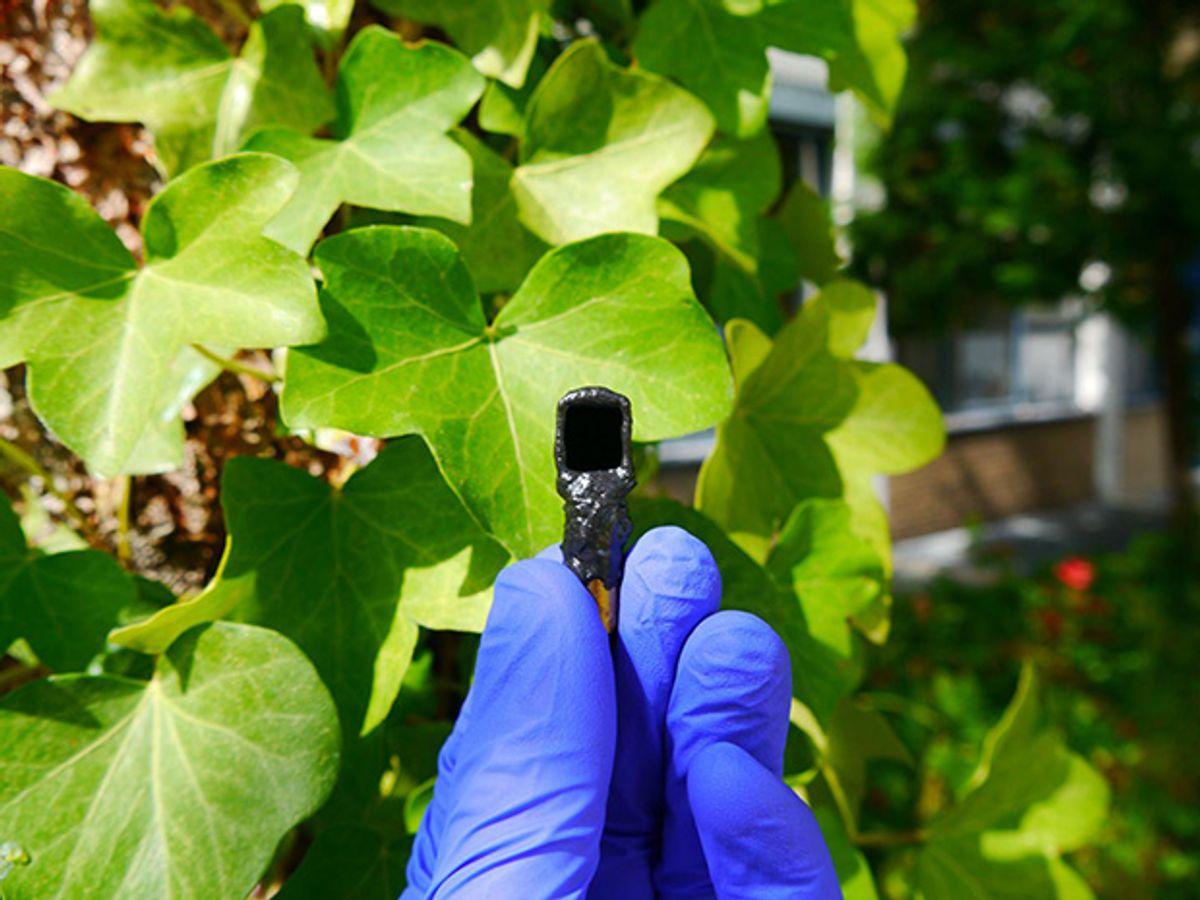A team of researchers from Germany and the U.S. have announced a new record value of 14% for the efficiency of water splitting by solar energy in a single cell. The previous record, 12.4%, was achieved 17 years ago by the National Renewable Energy Laboratory and the value in subsequent experiments with a technology called artificial photosynthesis has hovered around that figure. The researchers published this result last week in Nature Communications.
These figures should not be confused with the light conversion percentages of photovoltaic cells, explains Thomas Hannappel of the Technical University Ilmenau in Germany, who was the academic advisor for the researchers. “The percentages refer to the hydrogen efficiency, that is you compare the light energy captured by the photovoltaic cell to the energy that can be supplied by burning the produced hydrogen,” says Hannappel.
Artificial photosynthesis can be achieved by two different approaches: The first approach is a photovoltaic cell that supplies the current to the electrodes in a separate cell that splits water molecules into their constituents, hydrogen and oxygen. In the second approach, the photovoltaic cell also acts as an electrode in contact with water, and the voltage it produces splits the water directly. Having these two functions, photoelectricity generation and electrolysis into one unit makes it more usable, says Hannappel. “We have a greater range for cost reduction with one unit than with two different units,” says Hannappel.
However, still a lot of research will be necessary to reach this stage. “One of the referees during the publication process asked us, ‘Is this just a matter of dunking a high-efficiency PV cell into a solution and then getting out hydrogen?’ ” remembers Matthias May of the Helmholz Zentrum Berlin, whose doctoral dissertation dealt with this research. Indeed, the fact that you have to deal with a liquid-solid interface, the electrolyte, and the photosensitive semiconductor and a its interface with the catalyst surface is not a trio that gets along easily with each other.
First, the researchers opted for using III-V semiconductors for the photovoltaic material. Not the cheapest and experimentally easiest choice, but these materials, made from elements residing in the third and fifth column of the periodic table, are more efficient in converting light into electricity than silicon. To achieve the required voltage, the researchers used tandem cells in which two layers with different band gaps convert photons from the entire solar spectrum into electricity.
Now, to make the two percent improvement required some experimental ingenuity. “We tuned the surface of our III-V solar cell on a subnanometer scale, transforming aluminum-indium phosphide into phosphate species and then depositing the catalyst on top,” says May. “What was important here was that the photochemical transformation process was all done in situ. This means that this interface never saw ambient air before the catalyst was deposited. That was very important because otherwise you will get charge-carrier recombination centers at the interface and this will reduce your overall device efficiency.”
Also the stability of these devices, complicated by chemical interactions between the electrolyte and the photovoltaic surface is still a far cry from current voltaics, although their prototypes ran for 40 hours. “One year ago we had stabilities of a couple of seconds, and we have improved that by three-four orders of magnitude, so we are optimistic that we can improve that by another three or four orders of magnitude.”
Ultimately, higher efficiencies, starting with 18–20% will allow the conversion of solar energy into hydrogen to become part of the burgeoning hydrogen economy. “In Germany we have a company that uses windmills connected to electrolyzers and they inject the hydrogen directly into the methane gas grid; you can do that up to five volume percent without changing the grid. This also forms some storage capacity if you have an overcapacity of electricity in the grid,” says May.



